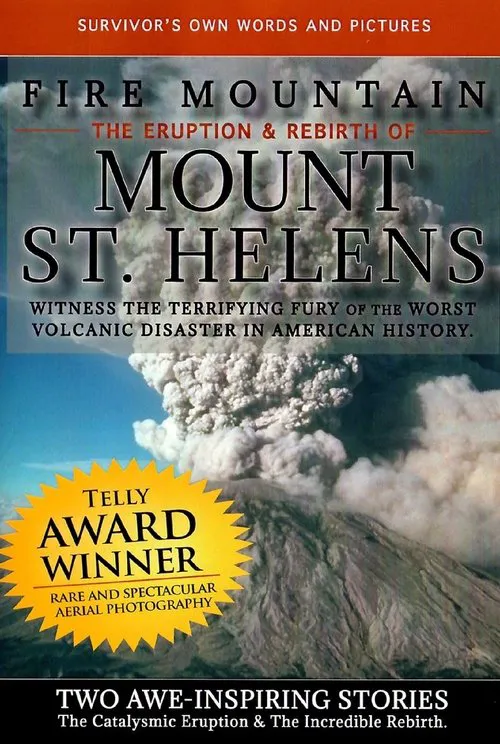Fire Mountain: The Eruption and Rebirth of Mount St. Helens

Plot
Deep in the heart of the Pacific Northwest lies Mount St. Helens, a majestic volcano that had been dormant for over a century. The mountain had become a revered landmark for the local wildlife and a favorite haunt for hikers and photographers. But on May 18, 1980, the tranquility was shattered as a massive earthquake triggered a catastrophic eruption that would change the face of the mountain forever. The film "Fire Mountain: The Eruption and Rebirth of Mount St. Helens" takes viewers on a gripping journey through the moments leading up to the disaster, as well as the aftermath of the eruption. It begins by showing the serene landscape of the mountain and its surroundings, teeming with life and activity. However, this tranquility was short-lived as the pressure began to build up inside the mountain, culminating in a magnitude 5.1 earthquake that released the pent-up energy and triggered the eruption. As the explosion rocked the area, a massive ash cloud shot high into the sky, engulfing everything in its path. The mountain itself was reduced to a mere fraction of its former self, its north face now a smoldering, lifeless mass. The once-vibrant ecosystem around the mountain began to perish as ash fell from the sky, suffocating plants and animals alike. One of the most striking aspects of the film is its use of aerial photography, which captures the sheer scale of destruction and devastation caused by the eruption. Shot from a bird's eye view, the ash cloud is seen sweeping across the landscape like a dark, malevolent force, leaving a trail of destruction in its wake. Footage of the immediate aftermath shows ash-covered bodies of streams and rivers, devoid of life as the once-clear waters turn a murky gray. Survivors' accounts are woven throughout the film, offering a personal perspective on the sheer terror and chaos that ensued during the eruption. Scientists and locals describe the earth-shattering blast, the screams of panicked wildlife, and the eerie silence that followed. Eyewitnesses recount the moments when the ash cloud engulfed the mountain, as if an otherworldly force had been unleashed upon the world. The film also provides a poignant glimpse into the lives of those who lost loved ones and livelihoods as a result of the disaster. For those who witnessed the eruption firsthand, it was a harrowing experience that would haunt them for the rest of their lives. For others, the eruption brought financial ruin and displacement as businesses and homes were reduced to rubble. Despite the scale of devastation, the film also highlights the incredible resilience of life in the face of adversity. Just 17 years after the eruption, a stunning recovery can be seen in the rebirth of nature on the mountain. The landscape, though still scarred, begins to show signs of renewal as new plant life sprouts from the ash-covered ground. The wildlife, having initially fled the area, begins to return, and the sound of birdsong and chirping fills the air once more. As the years pass, the once-barren slopes now bloom with vibrant wildflowers and lush vegetation, while towering trees begin to grow anew. In a striking sequence, the film juxtaposes stunning footage of a young deer drinking from a newly formed stream against the ruins of a once-thriving forest. It's a poignant reminder that, even in the face of destruction, life finds a way to reclaim its space. The film concludes on a hopeful note, illustrating that even in the most tragic of circumstances, there is always the possibility for renewal and rebirth. As the sun sets on the re-emerging slopes of Mount St. Helens, a sense of awe and wonder washes over the viewer, reminding us that, no matter how powerful the forces of nature may be, life is always prepared to reclaim its rightful place.
Reviews
Recommendations


